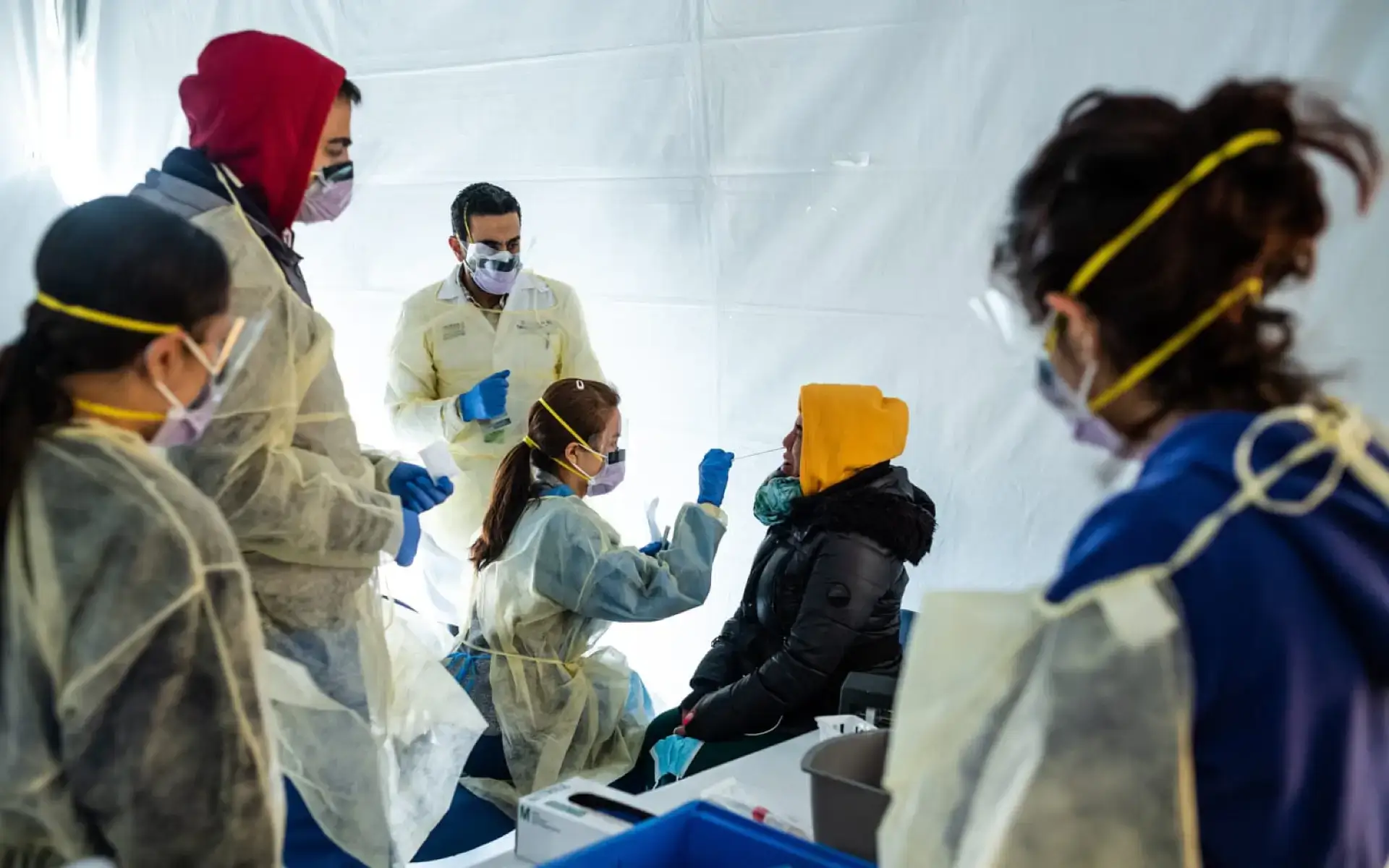Healthcare professionals are voicing their worries that profit may be prioritized over protection as the Centers for Disease Control and Prevention (CDC) revises its guidelines on airborne transmission.
In the initial months of 2020, as the Covid-19 pandemic took hold, hospitals in major cities like New York were swamped with patients. Medical practitioners were instructed to work without the protective N95 masks. This directive was given despite the increasing number of Covid-19 cases and continuous loss of patients’ lives.
As the pandemic progressed, many front-line workers fell ill due to the lack of proper personal protective equipment (PPE). In the first year alone, over 3,600 healthcare workers lost their lives to Covid-19. The absence of effective protection led to the transmission of the virus among families of these workers.
The advice from the CDC at the time stated that airborne transmission was limited, and N95 masks were necessary only for certain close-distance medical procedures. This stance contradicted the observations of doctors on the ground and the research findings of scientists studying airborne viral transmission.
READ ALSO: FDA Warns For Risk of Mental Health Side Effects From from Asthma Drug
The CDC is currently working on a new set of critical guidelines aimed at controlling the spread of infectious diseases in healthcare facilities. These guidelines update the existing ones established almost two decades ago. The revised guidelines will shape the protocols and procedures for infectious disease control in the coming years.
Peg Seminario, a former director at the American Federation of Labor and Congress of Industrial Organizations, said, “This is the foundational document. It becomes gospel for dealing with infectious pathogens.”
The CDC’s initial draft of the updated guidelines has sparked controversy. Critics argue that it provides room for employers to make unsafe decisions regarding protection against airborne infections. The CDC has since revisited the draft in response to the outcry and has expanded its range of experts for consultation.
The draft guidelines recommend different approaches for viruses that spread predominantly over short distances versus those that spread efficiently over long distances. This distinction, however, has been criticized as reflecting a lack of scientific understanding.
Dr. Don Milton, an aerobiology specialist, explained that focusing on distance obscures what is known and could lead to poor decisions. He stated that what matters is the route of infection, the concentration of virus-laden droplets, and the consequences of exposure.
Critics warn that if the final guidelines do not clearly state the need for N95 masks, hospitals might not adequately stock them, potentially leading to shortages in future health emergencies. Additionally, if the guidelines do not emphasize the importance of ventilation and air filtration, healthcare facilities might not invest in necessary upgrades.
Dr. Sonya Stokes, an emergency physician, voiced her concerns, saying, “If the CDC doesn’t prioritize the safety of health providers, health systems will err on the side of doing less, especially in an economic downturn.”
